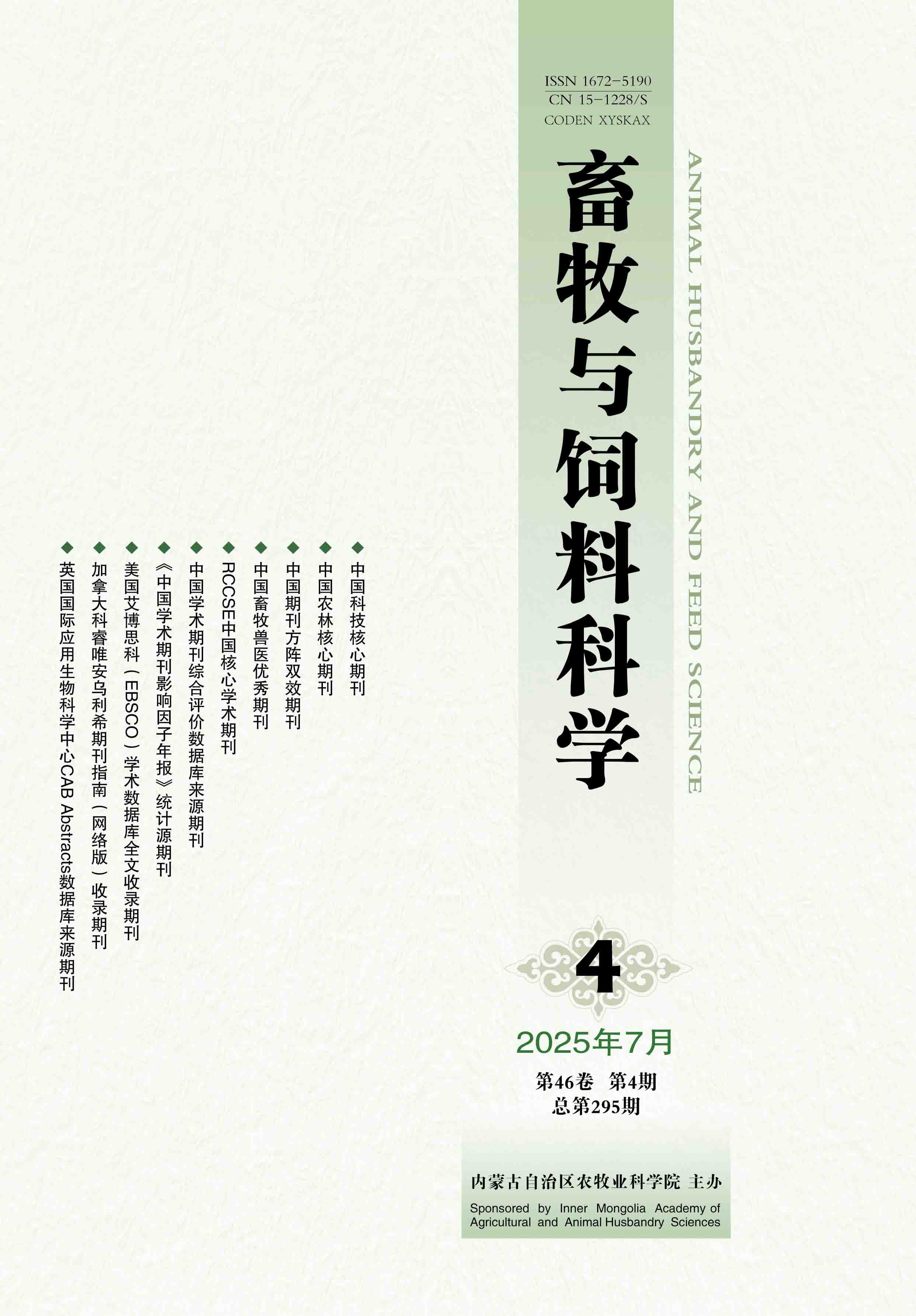Select
Study on Copper Deficiency in Mongolian Sheep Lambs in Gobi Grassland in Spring
LI Chang-qing, WANG Li, Jinhai, XUE Shu-yuan, GUO Tian-long, WANG Chao, ZHANG Hai-ying, TIAN Feng
2022, 43(2):
46-50.
doi:10.12160/j.issn.1672-5190.2022.02.008
Abstract
(
354 )
PDF (625KB)
(
33
)
Save
References |
Related Articles |
Metrics
[Objective] To determine the primary causes of sickness and mortality in Mongolian sheep lambs in Gobi grassland in northern Sonid Left Banner, Inner Mongolia, throughout the spring. [Method] Samples were taken from three family livestock farms with the most diseased lambs. Blood samples were taken from five diseased lambs from each farm. Samples of drinking water in grazing pastures were collected. Further more, three main forages (Reaumuria soongarica , Salsola passerina , and Kalidium foliatum ) and soil samples from the lambs′ habitat were taken as well. Samples from 15 healthy lambs of the same breed were obtained as controls from a local breeding sheep farm. The concentrations of ten mineral elements (calcium, phosphorus, iron, manganese, copper, zinc, magnesium, molybdenum, selenium and cobalt) in above samples were analyzed. [Result] Copper and magnesium concentrations in diseased lambs′ blood were significantly lower (P <0.05) than those in healthy lambs of the same breed, whereas molybdenum concentrations were significantly higher (P <0.05). The concentrations of the other mineral elements did not differ significantly (P >0.05). In the surroundings of the diseased lambs, the levels of magnesium and calcium in drinking water were higher. The levels of molybdenum, iron, manganese, and selenium in Reaumuria soongarica were higher than those described in the literature, whereas the levels of the other mineral elements were within normal limits. The levels of molybdenum, iron, manganese, selenium, magnesium, and cobalt in Kalidium foliatum were above those reported in the literature, whereas the contents of the other mineral elements were within normal limits. In Salsola passerina , Reaumuria soongarica and Kalidium foliatum , the ratios of copper to molybdenum were 15.96∶1, 0.23∶1, and 2.34∶1, respectively. The levels of copper, iron, manganese, selenium, and cobalt in the soil samples from the diseased lambs′ habitat were lower than those described in the literature, magnesium, calcium, and phosphorus levels were higher, and molybdenum and zinc levels were within normal limits. [Conclusion] Insufficient copper intake is the leading cause of sickness and mortality in Mongolian sheep lambs in Gobi grassland. Exceeded molybdenum as well as excessive intake of iron, manganese and some other mineral elements cause the malabsorption of copper by lambs, leading to secondary copper deficiency.








